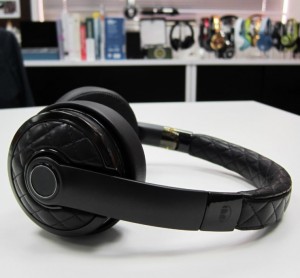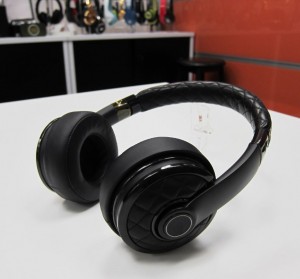3D Printed Headphones for the Runway
Monster is the world’s leading manufacturer of high performance cables for audio/video components used in the home, car and office — a widely celebrated product by music lovers, audiophiles, recording studios, sound professionals, musicians, custom-installers and home theater enthusiasts.

The company came to Fathom in need of prototyping six headphones, a new design that would be worn by celebrities and runway models at an event in Paris where Monster would unveil a new brand partnership. Monster required a quick turnaround since the fully finished models would be hand carried on a plane to Europe in eight days.
“I was tasked with a project that was pretty much impossible to pull off, needing six completed models in just eight days for the largest fashion show in Paris,” said Mike Reickerd, Director of Manufacturing and Quality at Monster. “I discovered Fathom on the web on Thursday, had files and NDA’s on Friday, a design review on Saturday and was 3D printing by that afternoon.”
The Fathom team reviewed the CAD model and advised on changes that would maximize 3D printer speed, increase model durability and reduce project complexity in order to meet the quick turnaround requirements. Monster opted to 3D print the main body, CNC machine small accents and flexible headband and finish the model with custom paint. Additional accents were added.

“The very next day we were on a conference call with a machinist, a paint expert and a CAD specialist to coordinate our efforts,” said Tony Slavik, Prototype Studio Manager at Fathom. “Given the short amount of time, the Fathom team advised the customer on necessary changes to the internal design.”
The goal was to maintain all aesthetic features while simplifying the assembly so that most of the model could be 3D printed, sanded and painted — shortening production time without altering design intent.
“With the majority of the assembly 3D printed,” said Slavik, “It was easier to simplify the metal accents. This made the CNC machining of those parts relatively simple so the tight deadline could be met.”
The 3D printed assembly was built on an Objet 500 Connex3 in VeroBlue, an ideal material for models that need to be sanded and painted.
“It’s slightly softer than other Vero materials, making the bodywork faster,” added Slavik. “Plus, the color catches shadows well to show off any flaws that still need more sanding.”
Within days, all models were completed and delivered to the fashion show in Paris on time.
